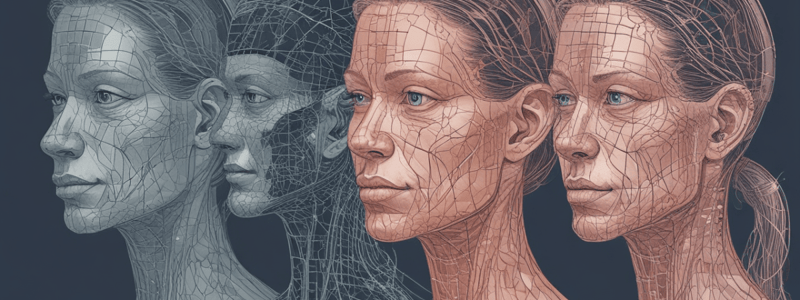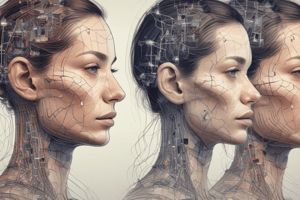Podcast
Questions and Answers
What is a key feature of the end-to-end approach mentioned in the text?
What is a key feature of the end-to-end approach mentioned in the text?
- Taking specific algorithms for each task.
- Providing lots of data to the algorithm. (correct)
- Limiting the neural network to one type of detection.
- Not involving autonomous control systems.
In what domain can techniques similar to facial detection be applied, as mentioned in the text?
In what domain can techniques similar to facial detection be applied, as mentioned in the text?
- Fashion industry
- Construction
- Health Care medicine (correct)
- Agriculture
What makes the approach of companies like Waymo and Tesla different from the end-to-end approach discussed?
What makes the approach of companies like Waymo and Tesla different from the end-to-end approach discussed?
- They do not follow an end-to-end approach. (correct)
- They do not involve actuation in their systems.
- They do not use neural networks.
- They focus on image recognition only.
How does the end-to-end approach differ from traditional approaches in self-driving cars?
How does the end-to-end approach differ from traditional approaches in self-driving cars?
What is a potential application of replacing facial detection with disease region detection, as mentioned in the text?
What is a potential application of replacing facial detection with disease region detection, as mentioned in the text?
Why is the end-to-end approach discussed considered radical compared to other methods?
Why is the end-to-end approach discussed considered radical compared to other methods?
What is the focus of today's discussion in MIT success 191?
What is the focus of today's discussion in MIT success 191?
Why is vision considered one of the most important senses for humans?
Why is vision considered one of the most important senses for humans?
What has deep learning enabled in the field of computer vision according to the text?
What has deep learning enabled in the field of computer vision according to the text?
How has deep learning impacted facial recognition technology?
How has deep learning impacted facial recognition technology?
What kind of input enters a deep neural network for computer vision tasks?
What kind of input enters a deep neural network for computer vision tasks?
Why is deep learning considered advantageous for AI creators in facial detection?
Why is deep learning considered advantageous for AI creators in facial detection?
Flashcards are hidden until you start studying
Study Notes
Computer Vision and Deep Learning
- Computer vision is the ability to give machines a sense of vision, which is a crucial part of human life.
- Deep learning has transformed computer vision, enabling machines to solve complex tasks that were previously impossible.
Facial Recognition and Beyond
- Facial recognition is an example of how vision is transforming computer vision.
- Deep neural networks can be trained to recognize human faces, emotions, and key facial features.
- The neural network can be modified to detect disease regions in the retina of the eye, among other applications in healthcare and medicine.
Autonomous Systems
- Self-driving cars use computer vision to learn an autonomous control system.
- This approach is end-to-end, meaning vision and pixels are input, and the actuation of the car is output.
- This is different from how most autonomous car companies, like Waymo and Tesla, operate.
Advantages of Deep Learning
- Deep learning enables the creation of AI that doesn't need to be specifically tailored for a particular task, like facial detection.
- This allows for the swapping of task types, such as disease detection or object recognition, using the same algorithm.
Applications of Computer Vision
- Computer vision can be applied to various fields, including healthcare, medicine, and biology.
- It has the potential to detect and classify many different types of diseases.
Studying That Suits You
Use AI to generate personalized quizzes and flashcards to suit your learning preferences.




